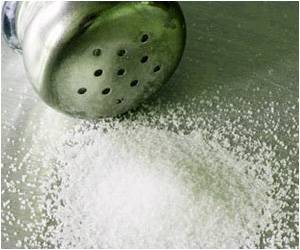The guidelines suggest salt reductions for around 150 categories of foods, with targets to be achieved within two and ten years.

‘The daily recommended sodium intake is 2,300 milligrams, but, an average American adult consumes 3,400 milligrams of salt every day.’





Sodium content is already included in the existing food labels. But the specifically recommended levels of sodium is not set by the government. The new guidelines suggest limits for about 150 categories of foods. Studies have shown that blood pressure increases with high intake of sodium, increasing the risk of heart disease and stroke, said CDC health officials.
FDA Commissioner Robert Califf said that many people may not be conscious of how much sodium they are eating until they get sick. Our great hope is that this will initiate a very serious national dialogue.
The daily salt intake of Americans is about 1½ teaspoons or 3,400 milligrams. The amount has not gone down over the years, and it is about one third more than the government’s recommendation for good health. Most of that sodium is hidden inside common processed foods and restaurant meals, making it harder for consumers to control how much they eat.
The food industry pointed out to 2013 IOM report that said there is no good evidence that eating sodium at very low levels – below the 2,300 milligrams a day offers benefits.
Advertisement
Many food companies and retailers already have pushed to reduce salt. Wal-Mart, ConAgra Foods, Nestle and Subway restaurants say they have achieved major sodium reductions in their products.
Advertisement
Sodium levels in food can differ. Sodium in a slice of white bread ranges from 80 milligrams to 230 milligrams. Three ounces of turkey deli meat can have 450 milligrams to 1,050 milligrams, according to CDC.
Health groups have argued for mandatory standards on sodium guidelines but say voluntary guidelines are a good first step. Michael Jacobson, the head of the Center for Science in the Public Interest, said that the government should assess how the voluntary standards work, and set mandatory targets if they don’t.
“It’s disappointing that the FDA is only proposing targets and not formal limits, but in this political climate with a Republican Congress and such massive industry opposition, we’re gratified that the administration is at least coming out with voluntary targets,” said Jacobson.
Source-Medindia













